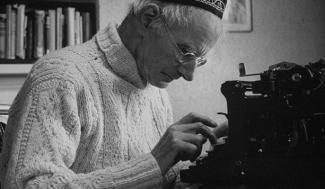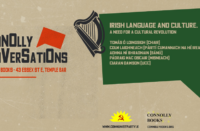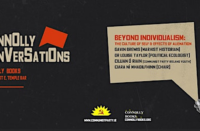Seán O’Casey was the first English-speaking dramatist of international significance to emerge from the proletariat. One of the recurring themes in his work is that of revolution. While in his early Dublin plays he controversially considered the Irish working class not yet ready for revolutionary change, his later works explore the potential for revolution.
O’Casey’s second last play Figuro in the Night (1961) is about revolution and liberation. The play is set in a new suburb of Dublin, flanked by two monuments: one commemorating the fallen Irish who served in the British Army during World War I, the other honouring those who died for Irish liberation. Both monuments document death.
The arrival of a third sculpture, a “Manneken Pis” statue in the city centre (in O’Connell Street), introduces a new note. In O’Casey’s play, it becomes a catalyst for a revolutionary uprising, where the people — especially the youth — overthrow the old order in a joyful, almost carnivalesque manner. The playwright focuses on the human dimension of the revolution, emphasising the liberation and reintegration into the nature of the whole person. This revolutionary vision emerges as a necessary antidote to the despair and life-denial of the contemporary world, offering hope and a strategic perspective for revolutionaries. The uprising of the humanised senses, particularly sensuality, is thus central to O’Casey’s portrayal of human liberation. This sensuality, which has evolved throughout history, forms the core of humanity, deeply rooted in the masses, and cannot be indefinitely suppressed by restrictive moral constraints.
The drama explores how internal subversion, even small signs of change, can lead to significant transformations. The young women, particularly the girl in the opening scene, are catalysts for this change, expressing the new spirit through song. The folksong “Oh dear, what can the matter be”, with its image of blue ribbons that a young man is to bring home from the fair for his sweetheart, runs as a leitmotif throughout the play.
The older characters, represented by the Old Man and Old Woman, may outwardly resist but are also influenced by the rising vitality of life. Although their liberation is incomplete, it represents a partial victory of sensuality even in those most attached to the old ways. Thus, the world depicted in the play, despite its degeneration, is not portrayed as dead but rather as ripe for revolution, with the sensual-emotional uprising serving as a catalyst for broader changes. The drama suggests that life is full of potential for change, needing only the right spark.
By portraying the themes of revolution, transformation, and the power of human nature, O’Casey shows how pent-up energies and suppressed human instincts are unleashed during a spontaneous festival, embodying a broader social upheaval. O’Casey often uses communal festivities as focal points in his plays. However, unlike earlier celebrations, often controlled by oppressive forces such as the church or state, this festivity is secular, rooted in pagan traditions, and represents a genuine carnival of life. The connection to pagan roots is particularly evident in how this fountain of life can be traced back to a tradition of pagan water god worship, associated with ecstatic rituals that were initially suppressed and the wells later appropriated by the Catholic Church. Here, they reclaim their rights, and people seamlessly identify with this source of life.
This upheaval transforms a subdued suburban area into a blooming garden, symbolising humanity’s return to a new Eden. This Eden, unlike the Christian Garden of Eden, is one that humanity regains after experiencing and overcoming hardships. It is a place full of vitality and joy, where humanity takes its destiny into its own hands.
In contrast to the world depicted in The Plough and the Stars, where insurrection is portrayed as a distant event that brought only destruction and despair to the people, this later work shows a revolution in which the people actively participate. This upheaval, with its emphasis on the joy of life, brings profound and lasting changes to human relationships, a recurrent theme in O’Casey’s work.
The older characters in the play have a distorted perception of reality. They see the vibrant transformation of the world around them as decline and fear change. Yet, despite their resistance, their physical senses betray them, and they involuntarily become participants in the revolution they seem to reject. While the corrupt journalists — the Blind and the Deaf — cannot grasp the transformative power of the revolution, the old men, despite their weaknesses, are ultimately touched by it.
The character of the Birdlike Lad embodies the union of human and nature and serves as a messenger connecting the local events of the play with a broader revolutionary context. He emphasises that the uprising is not confined to one place but spreads universally, even reaching the highest power structures in the form of the bishops, who now themselves sing love songs. “Oh dear, what can the matter be”, referenced repeatedly in song, speech, and images of blue ribbons, receives a completely new ending at the drama’s conclusion, and longing is fulfilled, becomes reality, on stage. The play ends with the consolidation of the revolution in an organised, majestic dance.
Figuro in the Night portrays the revolution in O’Casey’s play as a powerful, transformative force that liberates suppressed human energies, revitalises society, and reclaims a new Eden. Ultimately, the play offers a hopeful vision of human renewal and the possibility of a life-affirming social order.






